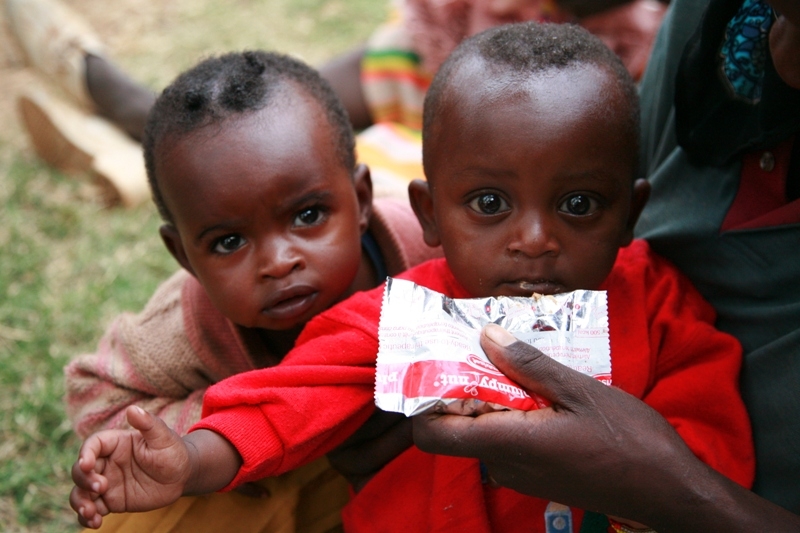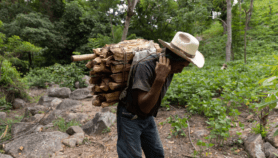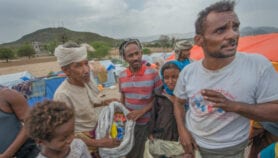By: Sandy Barron
Send to a friend
The details you provide on this page will not be used to send unsolicited email, and will not be sold to a 3rd party. See privacy policy.
Child malnutrition among refugees who fled conflict in Myanmar still needs attention, writes Sandy Barron.
For almost 30 years, international donors have supported refugee camps in Thailand for mainly ethnic minority groups fleeing conflict zones in neighbouring Myanmar.
However, recent political improvements in Myanmar have seen a marked reduction of aid to the nine camps on the Thailand border that are home to around 140,000 people.
As a result, food rations have been reduced for all but the most vulnerable camp residents, such as pregnant women. So the cuts mean that new arrivals are no longer guaranteed to receive any food aid as some donors anticipate a durable peace in the places refugees have left — although this has yet to be secured.
Meanwhile, child undernutrition is reaching worrying levels in the camps.
A 2012 study [1] showed that 41.5 per cent of under-fives in the camps are stunted due to chronic malnutrition — a rate that WHO benchmarks define as 'very high'.
The figure mirrors almost exactly a 2010 study indicating acute undernutrition among 41.2 per cent of under-fives living in conflict zones in Karen state across the border in Myanmar. [2]
Infant vulnerability
When food is scarce or inadequate, the consequences are often most severe for infants, whose brains continue to develop in the first two years of life, and young children.
That's why the agency charged with administering dwindling donor funds deserves support this May, as it rolls out pilot nutrition assistance for infants aged between six and 24 months using a scientifically developed supplementary food to tackle child stunting in the camps.
The formula, named BabyBright, is made in Thailand, where it has also been tested, says Andrea Menefee, a senior nutrition technical specialist at The Border Consortium, the agency responsible for providing food and shelter support in the camps.
This rice- and soy-based flour mix is cooked with water for five minutes to create porridge. The formula also contains dried milk powder, sugar, vegetable oil and micronutrients, providing a blend of ingredients that are essential for babies during the short window when they grow most of the brain capacity they will have for life. The roll-out is due to begin in Ban Don Yang and Umpiem Mai camps, followed by the seven other sites by the end of the year.
In all, there are around 6,000 children under the age of 24 months in the nine camps, the most crucial age for preventing stunting.
Malnutrition's hidden costs
Stunting is easy to measure: stunted children have a lower height for their age compared with well-nourished children.
But a landmark article series on undernutrition, published in 2008 by the Lancet, highlighted the much more dramatic invisible costs. [3] Stunted children are much more susceptible to contracting life-threatening illnesses such as pneumonia, diarrhoea and malaria. They suffer significantly lowered cognitive development, which lasts a lifetime.
Gradually, the scientists' message and the development implications for whole communities have been getting through.
In 2010, a United Nations-led global initiative called Scaling Up Nutrition (SUN) got underway. [4] It said nutrition was "seriously under-emphasised" among aid donors and developing countries.
Since then, SUN has been calling for more initiatives like the roll-out of formula at the Thai camps.
Donor support needed
The BabyBright initiative could generate useful evidence for future nutrition programmes, especially for other undernourished populations in Myanmar, Menefee points out.
As well as focusing on the obvious requirement to measure the programme's nutrition outcomes, The Border Consortium hopes to be able to demonstrate useful lessons as a result of its strong focus on community-led implementation.
''Community leadership and involvement is really essential for achieving optimum inclusion and uptake for nutrition programmes. We want to be able to show what works, and why," says Menefee.
She believes that her relatively small and nimble agency, with its long relationships with the camps, can implement initiatives and demonstrate results more quickly than other organisations.
The success of the SUN programme will depend, however, on key donors continuing their support to the camps, where residents' vulnerabilities were tragically underlined last Friday (22 March) when a fire at the remote Ban Mae Surin site quickly spread through tightly spaced bamboo huts, resulting in the deaths of more than 30 refugees.
Donors make decisions in the context of many competing priorities, analyses, projects and trends. Balancing all of these in relation to Myanmar may be challenging, but the core fact remains that refugee populations are still vulnerable victims of the country's long troubled history.
No one knows when the current nascent peace talks between the Myanmar government and the armed minority groups will deliver the durable settlements necessary for a voluntary refugee return.
It remains possible that this could take years. But children's nutrition can't wait that long.
Sandy Barron is an independent writer and editor based in Bangkok. She has written extensively on refugees.
This article has been produced by SciDev.Net's South-East Asia & Pacific desk.
References
[1] Thailand Burma Border Consortium. 2012 Nutrition Survey Report to CCSDPT Health Agencies (Thailand Burma Border Consortium, 2012)
[2] The Burma Medical Association et al. Diagnosis: Critical — Health and Human Rights in Eastern Burma (Back Pack Health Worker Team, 2010)
[3] The Lancet’s Maternal and Child Undernutrition Series (The Lancet, 2008)
[4] SUN Movement Secretariat. Scaling Up Nutrition: SUN Movement Progress Report 2011–2012 (SUN Movement Secretariat, 2012)














